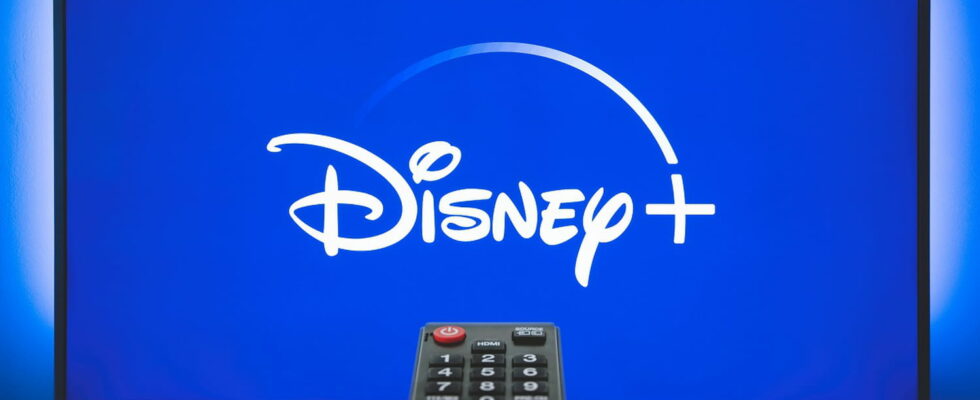After Netflix, it is Disney+’s turn to ban the sharing of free accounts with a host of dissuasive measures. Like its major competitor, the platform now offers a paid option, but it is more expensive and quite limited.
It was only a matter of time, but this time, it’s finally here: Disney++ is ending free account sharing! Last summer, the family entertainment giant had clearly expressed its desire to fight against this practice, while American subscribers received emails in September 2023 informing them of the changes made to the user agreement of its streaming platform, which includes “restrictions on account sharing” French subscribers were only entitled to this last July, when they received an email concerning a “update of the general subscription conditions”, as reported The Echo. Finally, it was this Thursday, September 26, 2024 that the streaming platform set up its system to add a member to the household – for a fee, of course.
Disney+ account sharing: fairly high rates
The company has finally unveiled its system for adding members to an existing account, similar to what Netflix did – which, as a reminder, charges each new household on the account €5.99 in France and $7.99 across the Atlantic. Thus, adding an additional member to a Disney+ account will cost $6.99 per month for a Standard account, or $9.99 for a Premium account. An important clarification: it is only possible to add one external person per household. We can assume that this will cost €5.99 and €8.99 in our countries. A priori, it would seem that this addition is not possible on the Standard subscription with ads. This system is available from this Thursday, September 26 in the United States, Canada, Costa Rica, Guatemala, Europe and the Asia-Pacific region.
Disney+ account sharing: it’s over, like with Netflix
Long feared, the end of account sharing for Netflix subscribers was a real shock in the world of streaming. This practice, although very popular, is more popular than ever, with the proliferation of SVODs and significant price increases. The strategy of the Red N was risky because such a change in policy could have led to the departure of many customers.
Ultimately, the opposite happened, and six million new users finally decided to sign up for a new subscription between April and June 2023, which is much more than the number of departures. And that’s without counting the users who agreed to pay the extra €5.99 to add a member outside the household to existing accounts! This has clearly given some of its competitors ideas since, almost three months after Netflix, in early August 2023, Disney+ was preparing to test a restriction on account sharing in India, as reported by the British press agency Reuters.
Thus, users who want to access the platform and are not at home will see a message appear, explaining that they are not at home and suggesting that they create their own account. Disney+ has clearly indicated that the service has the means to analyze the activity of its users. And the firm is not joking, because it explains, in the French contract, that “If we determine that you have breached this Agreement, we may restrict or terminate access to the Service” ! The same goes for the smart people who regularly use the platform via a web browser and who have installed an ad blocker.
The agreement also stipulates that the new rules apply to all subscribers. “unless otherwise permitted by your service level”. As with Netflix, if unwanted subscribers finally decide to take out their own subscription, their profile can be transferred. It remains to be seen whether the squatters will subscribe to their own offer, as was the case with the Red N, or whether disgruntled users will desert the platform.
Disney+ Account Sharing: A Way to Replenish the Coffers
The general conditions of use, or CGU, had already been modified to include a statement explaining that subscribers “will agree not to usurp or distort [son] affiliation with any person or entity, including using another person’s username, password or other account information, or another person’s name or likeness, or providing false details about a parent or guardian.”
This decision is hardly surprising, as the platform needs to replenish its coffers. Indeed, after having invested heavily in the production of original series and films – particularly for Star Wars and the Marvel universe – the company with the big ears must confront profitability issues. And this is not the first time that it has looked to Netflix to find the solution. In November 2023, it launched the Standard formula with advertising in France, a subscription partly financed by advertising, and increased its prices (see our article).
Disney+: advertising in all subscriptions?
By the way, speaking of advertising. Until now, the service offered, like Amazon and Netflix, a first level of package with advertising. The other subscriptions were therefore exempt from it. However, the platform indicated in its July email that, from now on “All subscriptions may include limited advertising, promotional content, Disney brand information, sponsorship messages and other content, including advertisements within live content or special events that contain traditional commercial breaks.”
Without further ado, everyone thought that no subscription plan was safe from advertising during a series, film or documentary broadcast on the platform. Fortunately, the truth is less cruel. Advertising will only be included in the Standard and Premium plans under very specific conditions. Thus, only live broadcasts and other special programs from a traditional television broadcast will be able to include ad breaks. Promotional content could also be included on the platform’s home page, but it should not be included under any circumstances when watching films and series in the catalog. So it’s less annoying than you might think – but it is still annoying.

